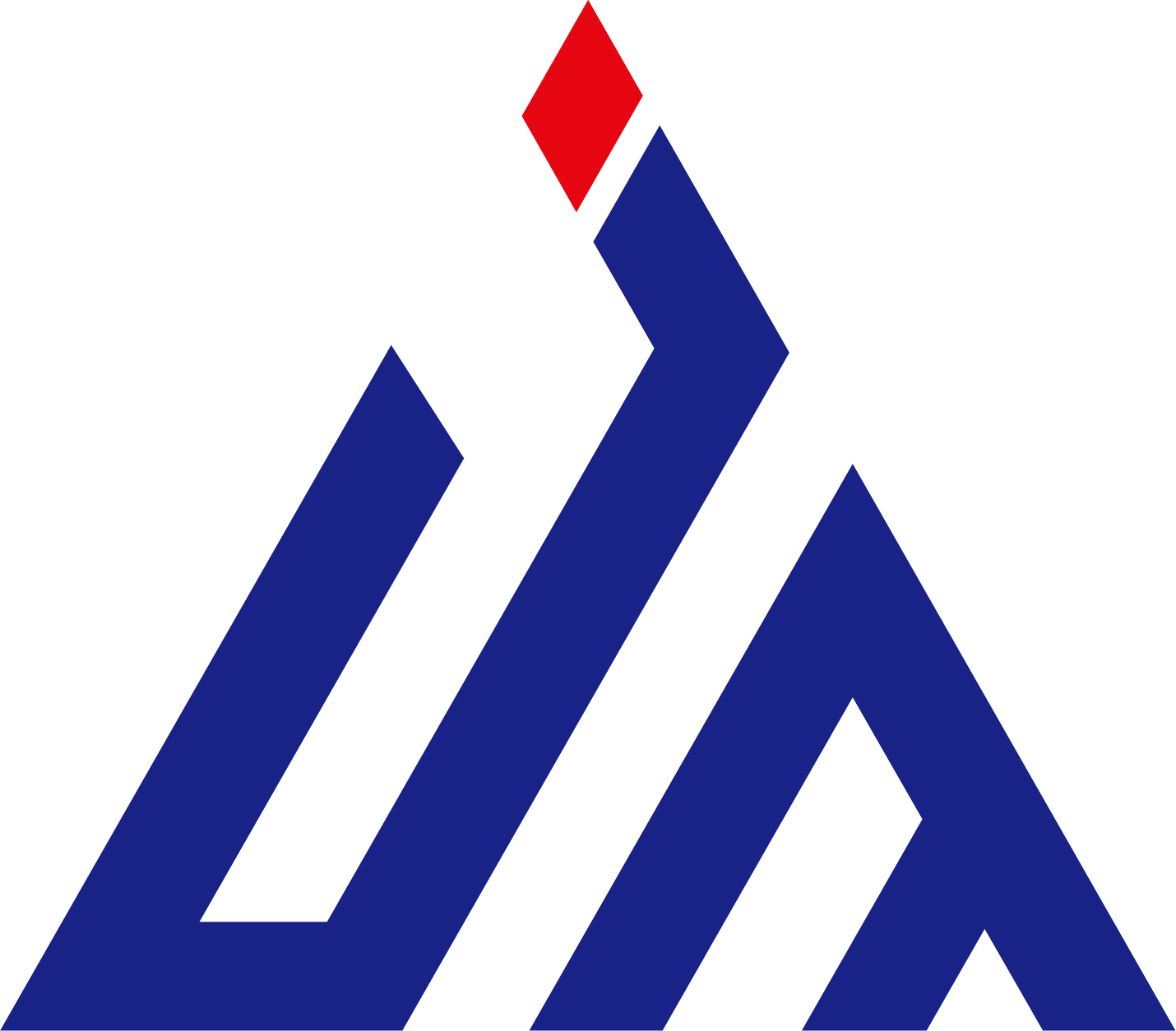จะสามารถ การพิมพ์สกรีน สามารถปรับปรุงประสิทธิภาพของเครื่องพิมพ์แบบซิลค์สกรีนเพื่อเพิ่มความเร็วในการผลิตและคุณภาพที่ดีขึ้นได้อย่างไร
การปรับปรุงประสิทธิภาพของ เครื่องพิมพ์จอ สำหรับความเร็วในการผลิตที่สูงขึ้นและคุณภาพที่ดีขึ้น ถือเป็นสิ่งสำคัญสำหรับธุรกิจที่ต้องการเพิ่มปริมาณการผลิตโดยไม่ลดทอนความแม่นยำหรือความทนทานของการพิมพ์ ไม่ว่าจะใช้เครื่องพิมพ์แบบซิลค์สกรีนแบบแมนนวล เครื่องกึ่งอัตโนมัติ หรือแบบอัตโนมัติเต็มรูปแบบ การปรับแต่งเล็กน้อยในเรื่องการตั้งค่า การบำรุงรักษา และกระบวนการทำงาน สามารถเพิ่มประสิทธิภาพและความสำเร็จได้อย่างมาก จากการปรับเทียบองค์ประกอบไปจนถึงการอัปเกรดเครื่องมือ แต่ละขั้นตอนการปรับปรุงจะช่วยร่วมกันลดการหยุดทำงาน เพิ่มความสม่ำเสมอ และทำให้พิมพ์ได้เร็วยิ่งขึ้น คู่มือนี้จะกล่าวถึงกลยุทธ์ที่ใช้งานได้จริงในการปรับปรุงเครื่องพิมพ์แบบซิลค์สกรีน เพื่อให้มั่นใจว่าเครื่องทำงานได้อย่างมีประสิทธิภาพสูงสุด พร้อมทั้งรักษารายละเอียดการพิมพ์ที่มีคุณภาพสูง
ปรับเทียบและจัดแนวองค์ประกอบสำคัญ
การปรับเทียบและการจัดแนวอย่างเหมาะสม คือพื้นฐานของการปรับปรุงประสิทธิภาพของ เครื่องพิมพ์จอ เพื่อความเร็วและคุณภาพ การจัดแนวชิ้นส่วนที่ผิดพลาดจะทำให้เครื่องต้องทำงานหนักขึ้น ลดความเร็วในการผลิต และให้ผลลัพธ์การพิมพ์ที่ไม่สม่ำเสมอ การตรวจสอบให้แน่ใจว่าองค์ประกอบทั้งหมดอยู่ในตำแหน่งที่ถูกต้อง จะช่วยลดข้อผิดพลาด และทำให้เครื่องทำงานได้เร็วขึ้นและราบรื่นขึ้น
ขั้นตอนการปรับเทียบที่สำคัญ :
- การจัดแนวแผ่นรอง : แท่นวางวัสดุ (จุดที่วางวัสดุ) ต้องอยู่ในระดับและตรงกลางใต้หน้าจอพิมพ์ แท่นเอียงหรือไม่ตรงกลางจะทำให้หมึกพิมพ์ไม่สม่ำเสมอและเกิดการพิมพ์ผิดพลาด ต้องทำใหม่ซึ่งช้าลงในการผลิต ใช้เครื่องมือวัดระดับเพื่อตรวจสอบความเรียบ และปรับความสูงหรือตำแหน่งของแท่นตามคู่มือเครื่องจักร
- การตั้งค่าใบปาดและบาร์ปิดหน้าจอ (Flood Bar) : ใบปาด (ที่ใช้สำหรับกดหมึกพิมพ์) และบาร์ปิดหน้าจอ (ที่ใช้สำหรับกระจายหมึกให้ทั่วหน้าจอ) ต้องขนานกับแท่นวางวัสดุ และใช้แรงกดให้สม่ำเสมอ ปรับมุมของใบปาด (โดยทั่วไปที่ 45–75 องศา) และแรงกด เพื่อให้หมึกพิมพ์ทั่วถึงกัน แรงกดมากเกินไปจะทำให้หมึกสิ้นเปลืองและใบปาดสึกหรอ; แรงน้อยเกินไปจะทำให้การพิมพ์มีช่องว่าง
- แรงตึงของหน้าจอและความแม่นยำในการจัดตำแหน่ง : หน้าจอที่มีแรงดึงไม่สม่ำเสมอจะทำให้หมึกกระจายไม่เท่ากัน ส่งผลให้ภาพที่พิมพ์ออกมามัว ควรใช้เครื่องวัดแรงดึงเพื่อตรวจสอบให้แน่ใจว่าหน้าจอยืดตึงอย่างเท่าเทียมกัน (แรงดึงที่เหมาะสมอาจแตกต่างกันไปตามจำนวนตาข่าย แต่มักอยู่ที่ 20–30 นิวตัน/เซนติเมตร) สำหรับงานพิมพ์หลายสี การจัดแนว (การปรับตำแหน่งของหน้าจอ) ที่แม่นยำจะช่วยป้องกันการเบี้ยวของภาพ และลดความจำเป็นในการปรับแต่งด้วยมือระหว่างพิมพ์
- ความเร็วของการปาด : ปรับความเร็วในการปาดของยางปาดให้เหมาะสมกับชนิดของหมึกและวัสดุที่ใช้ หมึกที่เป็นน้ำอาจต้องการความเร็วที่ช้าลงเพื่อป้องกันไม่ให้หมึกกระเด็น ในขณะที่หมึกพลาสติโสภาสามารถใช้ความเร็วที่สูงขึ้นได้เมื่อหมึกถูกกระจายตัวเรียบร้อยแล้ว การปาดด้วยความเร็วที่คงที่จะช่วยให้หมึกถูกพิมพ์อย่างสม่ำเสมอในกระบวนการผลิตจำนวนมาก
องค์ประกอบที่ปรับตั้งค่าอย่างแม่นยำช่วยให้เครื่องพิมพ์แบบหน้าจอทำงานได้รวดเร็วขึ้นด้วยข้อผิดพลาดที่น้อยลง ส่งผลโดยตรงต่อทั้งความเร็วและคุณภาพ
อัปเกรดเป็นเครื่องมือและวัสดุที่มีคุณภาพสูง
เครื่องมือและวัสดุที่ใช้กับเครื่องพิมพ์แบบซิลค์สกรีนส่งผลโดยตรงต่อประสิทธิภาพในการทำงาน การลงทุนอัปเกรดวัสดุคุณภาพสูงจะช่วยลดเวลาที่เครื่องหยุดทำงาน เพิ่มความสม่ำเสมอในการพิมพ์ และทำให้การผลิตเป็นไปอย่างรวดเร็วมากยิ่งขึ้น
อัปเกรดที่จำเป็น :
- ใบปาดสกรีน : เปลี่ยนไปใช้ใบปาดแบบทนทานสูง เช่น ใบปาดพอลิยูรีเทน ซึ่งมีความต้านทานต่อรอยบากและมีอายุการใช้งานยาวนานกว่า ใบปาดที่คมและสม่ำเสมอช่วยให้การปาดหมึกสม่ำเสมอ ลดความจำเป็นในการพิมพ์ซ้ำ และทำให้สามารถเพิ่มความเร็วในการปาดได้
- ตะแกรงสกรีน : ใช้ตะแกรงสกรีนที่ถูกดึงให้ตึงล่วงหน้าและมีแรงดึงสูง พร้อมจำนวนเส้นใยละเอียด (เช่น 110–160 เส้น/ซม.) เพื่อการออกแบบที่มีรายละเอียดสูง ตะแกรงที่มีแรงดึงสูงจะช่วยลดการสั่นของตะแกรงขณะพิมพ์ ทำให้ขอบคมชัดและการถ่ายเทหมึกสม่ำเสมอ นอกจากนี้ยังทนทานต่อการใช้งานซ้ำ ๆ ช่วยลดความจำเป็นในการเปลี่ยนตะแกรงบ่อยครั้ง
- การผสมและจัดเก็บหมึก : ใช้ภาชนะใส่หมึกที่ปิดสนิทเพื่อป้องกันไม่ให้หมึกแห้งและจับตัวเป็นก้อน ซึ่งอาจทำให้หน้าจอแม่พิมพ์อุดตันและชะลอการผลิต ควรผสมหมึกเป็นจำนวนมากไว้ล่วงหน้าเพื่อให้สีสม่ำเสมอ และหลีกเลี่ยงการเสียเวลาปรับสีหมึกระหว่างการพิมพ์ สำหรับการพิมพ์ที่รวดเร็วขึ้น ให้ใช้หมึกที่มีความหนืดเหมาะสม หมึกที่เจือจางกว่าจะไหลได้ดีเหมาะกับการพิมพ์ความเร็วสูง ในขณะที่หมึกที่ข้นกว่าเหมาะกับการออกแบบที่ต้องการรายละเอียดชัดเจน
- ระบบอบแห้ง/การบำบัด : อัปเกรดเป็นเครื่องอบที่ทำงานได้เร็วกว่า เช่น เครื่องอบแบบสายพานลำเลียงที่สามารถปรับระดับความร้อนได้ เครื่องอบที่มีประสิทธิภาพจะช่วยให้หมึกแห้งเร็ว (เช่น หมึก plastisol ใช้เวลาประมาณ 60-90 วินาที) ลดเวลาการรอระหว่างพิมพ์ และทำให้ผลิตต่อเนื่องได้ ระบบอบด้วยแสง UV มีความเร็วมากกว่า โดยสามารถทำให้หมึกแห้งได้ภายในไม่กี่วินาทีด้วยแสง UV
เครื่องมือคุณภาพสูงช่วยลดการหยุดชะงัก และทำให้เครื่องพิมพ์แบบซิลค์สกรีนสามารถทำงานที่ความเร็วสูงขึ้นโดยไม่ส่งผลต่อคุณภาพของการพิมพ์

ปรับกระบวนการทำงานให้มีประสิทธิภาพและลดเวลาการหยุดทำงาน
ช่วงเวลาที่เครื่องหยุดทำงาน—ไม่ว่าจะเป็นการเปลี่ยนหน้าจอ การโหลดวัสดุ หรือการปรับตั้งค่าต่างๆ—ทำให้การผลิตช้าลงอย่างมาก การปรับกระบวนการทำงานให้มีประสิทธิภาพจะช่วยลดการหยุดชะงักเหล่านี้ ทำให้เครื่องพิมพ์แบบซิลค์สกรีนทำงานได้อย่างมีประสิทธิภาพ
เคล็ดลับในการปรับกระบวนการทำงาน :
- เตรียมงานล่วงหน้า : เตรียมหน้าจอ ผสมหมึก และตัดวัสดุให้พร้อมก่อนเริ่มการผลิต การมีทุกอย่างพร้อมใช้งาน (จัดแนวหน้าจอให้ตรง โหลดหมึกไว้ล่วงหน้า และจัดเรียงวัสดุให้เป็นระเบียบ) จะช่วยลดการหยุดระหว่างพิมพ์ สำหรับงานที่ต้องใช้หลายสี ควรเตรียมหน้าจอทั้งหมดไว้ล่วงหน้า แทนที่จะเปลี่ยนทีละอัน
- จัดกลุ่มงานที่คล้ายกัน : รวมคำสั่งซื้อที่ใช้สีหมึกเดียวกัน ประเภทวัสดุเดียวกัน หรือขนาดหน้าจอเหมือนกันเข้าไว้ด้วยกัน สิ่งนี้จะช่วยลดเวลาที่ต้องใช้ในการทำความสะอาดหน้าจอ ปรับปรุงหมึก หรือตั้งค่าเครื่องใหม่ระหว่างทำงาน ตัวอย่างเช่น การพิมพ์เสื้อสีขาวทั้งหมดก่อนแล้วค่อยเปลี่ยนไปใช้วัสดุสีอื่น จะช่วยประหยัดเวลาในการปรับตั้งแท่นพิมพ์
- ทำให้งานที่ทำซ้ำๆ เป็นระบบอัตโนมัติ : สำหรับเครื่องกึ่งอัตโนมัติหรือเครื่องแบบแมนนวล ให้เพิ่มอุปกรณ์เสริม เช่น ตัวยกแท่นอัตโนมัติหรือตัวหนีบสกรีน เพื่อเร่งความเร็วในการตั้งค่า เครื่องจักรแบบอัตโนมัติสามารถตั้งโปรแกรมค่าต่างๆ (ความเร็วใบกวาดยาง แรงดัน) ไว้ล่วงหน้าเพื่อเรียกใช้งานได้อย่างรวดเร็ว ทำให้ไม่ต้องปรับตั้งค่าด้วยตนเอง
- พนักงานขับรถไฟ : ควรให้ผู้ปฏิบัติงานคุ้นเคยกับการตั้งค่าของเครื่องพิมพ์สกรีน และสามารถแก้ไขปัญหาเล็กน้อยได้อย่างรวดเร็ว (เช่น การอุดตันของหมึก หรือการจัดแนวไม่ตรง) ผู้ปฏิบัติงานที่มีทักษะสามารถระบุและแก้ไขปัญหาภายในไม่กี่นาที ช่วยป้องกันการหยุดชะงักนานเกินไป
กระบวนการทำงานที่มีประสิทธิภาพจะช่วยให้เครื่องพิมพ์สกรีนทำงานอย่างต่อเนื่อง ช่วยเพิ่มความเร็วในการผลิตในขณะที่ยังคงคุณภาพไว้ได้
การบำรุงรักษาเป็นประจำเพื่อป้องกันการเสียหาย
เครื่องพิมพ์สกรีนที่ได้รับการบำรุงรักษาอย่างดีสามารถทำงานได้เร็วขึ้น มีความน่าเชื่อถือมากขึ้น และให้คุณภาพการพิมพ์ที่ดีกว่า การบำรุงรักษาเป็นประจำช่วยป้องกันการเสียหายที่ไม่คาดคิด และรับประกันว่าชิ้นส่วนต่าง ๆ จะทำงานได้อย่างมีประสิทธิภาพสูงสุด
แนวทางการบำรุงรักษาเพื่อเพิ่มประสิทธิภาพ :
- การทําความสะอาดทุกวัน : หลังการใช้งานแต่ละครั้ง ให้ทำความสะอาดลูกกลิ้งหมึก ใบปาด และแม่แบบ เพื่อขจัดคราบหมึกแห้งที่อาจก่อให้เกิดการอุดตันหรือการพิมพ์ที่ไม่สม่ำเสมอ เครื่องจักรที่สะอาดจะทำงานได้อย่างราบรื่นมากขึ้น ลดแรงเสียดทาน และช่วยให้สามารถทำงานได้เร็วขึ้น
- การหล่อลื่น : บำรุงรักษาชิ้นส่วนที่เคลื่อนไหว (บานพับ ราง เลื่อน แบริ่ง) ให้มีสารหล่อลื่นอยู่เสมอ เพื่อลดแรงเสียดทานและการสึกหรอ ชิ้นส่วนที่เคลื่อนไหวได้อย่างราบรื่นจะช่วยให้เครื่องจักรทำงานได้เร็วขึ้น โดยไม่ทำให้มอเตอร์หรือเกียร์ต้องทำงานหนัก
- ตรวจสอบชิ้นส่วนที่สึกหรอได้ : ตรวจสอบใบปาด แม่แบบ และสายพานทุกวันว่ามีสัญญาณของการสึกหรอหรือไม่ ควรเปลี่ยนชิ้นส่วนที่สึกหรอก่อนที่จะเกิดความเสียหาย เช่น สายพานที่แตกร้าวสามารถทำให้เครื่องหยุดทำงานทันที ส่วนใบปาดที่ทื่อจะทำให้พิมพ์งานออกมาไม่ดี ต้องทำซ้ำอีกครั้ง
- ทดสอบและปรับตั้งค่าเป็นประจำ : แม้ในระหว่างการทำงานผลิต ควรหยุดสั้นๆ เพื่อตรวจสอบคุณภาพของการพิมพ์ เช่น การจัดแนว ความสม่ำเสมอของหมึก การปรับแต่งเล็กๆ น้อยๆ ตั้งแต่แรกจะช่วยป้องกันข้อผิดพลาดที่ใหญ่โตในภายหลัง และลดความจำเป็นในการแก้ไขที่ใช้เวลานาน
การบำรุงรักษาเชิงป้องกันจะช่วยให้เครื่องพิมพ์แบบซิลค์สกรีนอยู่ในสภาพที่ดีที่สุด เพื่อให้สามารถทำงานที่ความเร็วสูงได้โดยไม่ลดประสิทธิภาพ
ใช้เทคโนโลยีและระบบอัตโนมัติ
สำหรับธุรกิจที่มุ่งขยายกำลังการผลิต คุณสมบัติของเทคโนโลยีและระบบอัตโนมัติสามารถเพิ่มความเร็วและความแม่นยำของเครื่องพิมพ์ซิลค์สกรีนได้อย่างมาก ช่วยลดข้อผิดพลาดจากมนุษย์ เร่งกระบวนการทำงาน และให้ผลลัพธ์ที่สม่ำเสมอ
ตัวเลือกเทคโนโลยีและระบบอัตโนมัติ :
- ระบบจัดแนวแบบดิจิทัล : ใช้กล้องหรือเซ็นเซอร์ในการจัดแนวแม่พิมพ์อัตโนมัติสำหรับการพิมพ์หลายสี ระบบเหล่านี้สามารถปรับจูนตำแหน่งให้ตรงกันภายในไม่กี่วินาที ช่วยกำจัดการวัดด้วยมือและลดข้อผิดพลาดในการพิมพ์
- การควบคุมแบบสัมผัส : เครื่องพิมพ์ซิลค์สกรีนรุ่นใหม่ที่มีหน้าจอสัมผัสช่วยให้ผู้ปฏิบัติงานสามารถบันทึกค่าตั้งค่างาน (ความเร็ว แรงดัน เวลาอบแห้ง) เพื่อเรียกใช้ได้รวดเร็ว ช่วยมาตรฐานค่าต่าง ๆ ระหว่างงานแต่ละชิ้น ทำให้ผลลัพธ์สม่ำเสมอและลดเวลาในการเตรียมงาน
- ระบบอัตโนมัติในการจัดการวัสดุ : เพิ่มเครื่องโหลด/อันโหลดอัตโนมัติสำหรับวัสดุเช่น เสื้อยืด หรือโปสเตอร์ ระบบเหล่านี้จะป้อนวัสดุไปยังแท่นพิมพ์และนำงานที่พิมพ์เสร็จแล้วออก ช่วยให้สามารถพิมพ์ต่อเนื่องได้โดยไม่ต้องมีผู้ควบคุมเครื่อง
- เซ็นเซอร์ควบคุมคุณภาพ : ติดตั้งเซ็นเซอร์ที่ตรวจสอบการทากหมึก การจัดแนว หรือข้อบกพร่องระหว่างพิมพ์ เซ็นเซอร์สามารถแจ้งเตือนผู้ควบคุมเครื่องถึงปัญหาแบบเรียลไทม์ ช่วยป้องกันการพิมพ์ชุดงานผิดพลาดจำนวนมาก และลดของเสีย
ระบบอัตโนมัติช่วยลดการพึ่งพาแรงงานคน เพิ่มความเร็วในการดำเนินการ และทำให้เครื่องพิมพ์สกรีนทำงานได้อย่างมีประสิทธิภาพสูงสุด
ปรับพารามิเตอร์หมึกและกระบวนการอบให้เหมาะสม
ประสิทธิภาพของหมึกและการอบหมึกมีความสำคัญต่อทั้งความเร็วและคุณภาพ การปรับประเภทหมึกและการตั้งค่าการอบให้สอดคล้องกับความต้องการในการผลิต สามารถลดเวลาในการอบแห้งและเพิ่มความทนทานของการพิมพ์
เคล็ดลับเกี่ยวกับหมึกและการอบ :
- เลือกใช้หมึกที่แห้งเร็ว สำหรับการผลิตความเร็วสูง ให้ใช้หมึกที่ออกแบบมาให้แห้งเร็ว เช่น หมึกที่แข็งตัวด้วยแสง UV (แห้งภายในไม่กี่วินาที) หรือหมึกพลาสติโอลที่แห้งเร็ว หมึกเหล่านี้ช่วยลดเวลาที่ใช้ระหว่างการพิมพ์แต่ละครั้ง ทำให้พิมพ์ได้รวดเร็วยิ่งขึ้น
- ปรับความหนืดของหมึก : ผสมตัวเจือจาง (สำหรับหมึกพลาสติโอล) หรือน้ำ (สำหรับหมึกชนิดน้ำ) ลงในหมึกเพื่อปรับปรุงการไหลเวียน ทำให้ใช้งานได้ง่ายขึ้นเมื่อพิมพ์ที่ความเร็วสูง อย่างไรก็ตาม ควรหลีกเลี่ยงการเจือจางมากเกินไป เพราะจะทำให้หมึกไหลเยิ้มหรือหมึกไม่ทึบ
- ปรับอุณหภูมิและระยะเวลาการอบให้เหมาะสม : ปรึกษากับผู้ผลิตระบบการอบเพื่อตั้งค่าอุณหภูมิที่เหมาะสม (เช่น 160–180°C สำหรับหมึกพลาสติโอล) และความเร็วของสายพานลำเลียง หมึกที่ถูกอบอย่างเหมาะสมจะทนต่อการซักและการจางสี ช่วยลดการคืนสินค้า ในขณะที่การอบที่รวดเร็วจะช่วยให้กระบวนการผลิตดำเนินไปอย่างต่อเนื่อง
- ทดสอบการยึดติดของหมึก : ทำการทดสอบการยึดติดของหมึกเป็นประจำ (เช่น การทดสอบด้วยเทป) เพื่อให้แน่ใจว่าหมึกที่ถูกอบแล้วยึดติดกับวัสดุได้ดี สิ่งนี้จะช่วยป้องกันปัญหาด้านคุณภาพที่อาจทำให้ต้องพิมพ์ซ้ำ และช่วยประหยัดเวลาในระยะยาว
การจับคู่หมึกและพารามิเตอร์การอบให้เหมาะกับความเร็วในการผลิต จะช่วยให้สีแห้งเร็ว โดยไม่สูญเสียความทนทานหรือรูปลักษณ์
คำถามที่พบบ่อย
เครื่องพิมพ์แบบซิลค์สกรีนชนิดใช้มือสามารถปรับปรุงให้ใช้งานได้เร็วขึ้นได้หรือไม่
ได้ โดยการปรับเทียบตำแหน่งให้ตรงกัน ใช้หน้าจอที่มีแรงตึงสูง และจัดกระบวนการทำงานให้มีประสิทธิภาพมากขึ้น แม้ว่าเครื่องแบบใช้มือจะไม่สามารถเทียบความเร็วกับเครื่องอัตโนมัติได้ แต่ขั้นตอนเหล่านี้จะช่วยเพิ่มผลผลิตและคุณภาพได้อย่างมาก
แรงตึงของหน้าจอส่งผลต่อความเร็วในการผลิตอย่างไร
หน้าจอที่มีแรงตึงสูงจะช่วยลดการสั่นของหน้าจอในระหว่างการพิมพ์ ทำให้สามารถปาดด้วยความเร็วได้มากขึ้นโดยไม่ทำให้ภาพเบลอ หน้าจอประเภทนี้ยังมีอายุการใช้งานที่ยาวนานกว่า ช่วยลดเวลาที่ต้องใช้ในการเปลี่ยนหน้าจอ
วิธีที่ดีที่สุดในการลดเวลาเตรียมการระหว่างงานคืออะไร
เตรียมหน้าจอและวัสดุไว้ล่วงหน้า บันทึกการตั้งค่าเครื่องไว้ในระบบดิจิทัล และจัดกลุ่มงานที่คล้ายกันไว้ด้วยกัน การใช้แคลมป์ยึดหน้าจอแบบปลดเร็ว ก็ช่วยให้การเปลี่ยนหน้าจอทำได้รวดเร็วขึ้นเช่นกัน
ระบบการอบส่งผลต่อความเร็วในการผลิตอย่างไร
ระบบเร่งการแห้งเร็ว (เช่น เครื่องอบ UV) ช่วยลดระยะเวลาในการพิมพ์ระหว่างแต่ละรอบ ทำให้สามารถผลิตต่อเนื่องได้ คอนเวเยอร์เครื่องเป่าที่ปรับความเร็วได้ช่วยให้ผู้ปฏิบัติงานสามารถปรับระยะเวลาการอบให้เหมาะสมกับประเภทของหมึก ทำให้ประสิทธิภาพการผลิตสูงสุด
ทำไมการฝึกอบรมผู้ปฏิบัติงานจึงสำคัญต่อการปรับปรุงประสิทธิภาพ
ผู้ปฏิบัติงานที่มีทักษะสามารถปรับตั้งค่าต่าง ๆ แก้ไขปัญหา และบำรุงรักษาเครื่องจักรได้อย่างรวดเร็ว ช่วยลดเวลาที่เครื่องจะหยุดทำงาน นอกจากนี้ยังช่วยให้คุณภาพงานพิมพ์มีความสม่ำเสมอ หลีกเลี่ยงการพิมพ์ซ้ำที่ทำให้การผลิตล่าช้า

